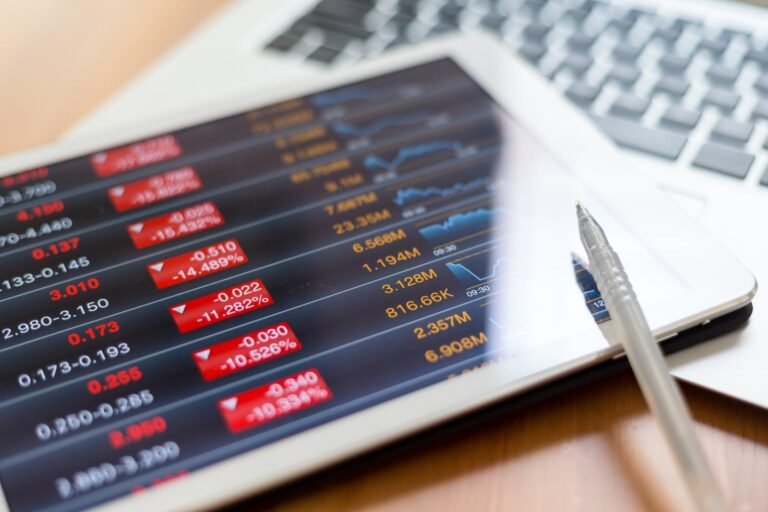Crypto markets are known for their volatility, with prices swinging wildly within short spans. As traders, we’re constantly looking for ways to smooth out this noise and identify real trends. One tool that helps us cut through confusion is the Moving Average (MA). Let’s walk through how you can use moving averages to make smarter, more confident trading decisions.
What is a Moving Average?
A moving average is a technical indicator that smooths out price data by creating a constantly updated average price. For example, a 20-day MA calculates the average closing price over the last 20 days. It “moves” as new prices are added, giving a clearer view of where the market is trending.
Types of Moving Averages You Should Know
There are two main types:
- Simple Moving Average (SMA): It gives equal weight to all data points in the period. For example, a 10-day SMA adds up the last 10 days’ closing prices and divides by 10.
- Exponential Moving Average (EMA): This gives more weight to recent prices, reacting faster to current market movements. Many crypto traders prefer EMA for short-term trading because of its responsiveness.
Some advanced traders use Weighted Moving Averages (WMA) or even Moving Average Ribbons (multiple EMAs stacked together) to identify trend strength, but for now, let’s keep it simple.
Choosing the Right Period for Moving Averages
Selecting the period of your MA is critical. Here’s a quick guide:
- Short-term MAs (10, 20, 50): These are great for quick signals and spotting immediate momentum shifts. However, they can give false signals in sideways markets.
- Long-term MAs (100, 200): These help you identify major trends and filter out noise. Many traders watch the 200-day MA to see if an asset is in a long-term uptrend or downtrend.
The trade-off is simple: shorter periods are more sensitive but less reliable; longer periods are steadier but lag more.
How to Set Up Moving Averages on Your Chart
Setting up MAs is straightforward. Most crypto trading platforms like Binance, TradingView, or Bybit have built-in MA tools. Here’s how:
- Open your chart and click “Indicators.”
- Search for “Moving Average” or “EMA.”
- Select your desired type and set the period (e.g., 20 or 50).
- Choose the price source, typically the closing price.
- Customize the line color to keep multiple MAs clear.
Tip: Use different colors for each MA to avoid confusion during quick analysis.
Reading a Single Moving Average
The slope of your MA tells you the trend. If the MA is angled upwards, the market is trending up. If it’s sloping down, you’re in a downtrend. Also, notice price interactions:
- Price above MA: Often indicates support and a bullish market.
- Price below MA: Often indicates resistance and a bearish market.
You can use these levels for dynamic stop-loss placements or as entry confirmations.
Popular Moving Average Strategies
1. Crossover Strategy
This is widely used due to its simplicity:
- Bullish crossover: When a shorter MA (e.g. 20 EMA) crosses above a longer MA (e.g. 50 EMA), it signals a potential uptrend.
- Bearish crossover: The opposite happens when the shorter MA crosses below the longer MA, suggesting a downtrend.
2. Golden Cross & Death Cross
- Golden Cross: A bullish signal where the 50-day MA crosses above the 200-day MA, indicating a long-term uptrend.
- Death Cross: A bearish signal where the 50-day MA crosses below the 200-day MA.
3. EMA Ribbon
This involves stacking multiple EMAs (e.g. 5, 10, 20, 50). The wider the ribbon, the stronger the trend. When ribbons compress, a trend reversal might be near.
Combining MAs with Other Indicators
Moving averages work best when used alongside other indicators. For example:
- MACD (Moving Average Convergence Divergence): Combines EMAs to show momentum and trend changes.
- RSI (Relative Strength Index): Shows whether an asset is overbought or oversold.
- Bollinger Bands: Use moving averages to plot volatility bands for breakout trading.
This multi-layered approach helps filter false signals and increases your probability of success.
Risk Management and Best Practices
Remember, MAs are lagging indicators. They confirm trends but don’t predict them. Always:
- Use stop-loss orders to manage downside risks.
- Backtest strategies on historical charts to see how they perform.
- Combine with market structure analysis. Relying solely on MA crossovers without understanding overall price action can lead to poor trades.
Example Trade Walkthrough
Imagine you’re analyzing Bitcoin. You set up a 20 EMA and 50 EMA on the 1-hour chart. The 20 EMA crosses above the 50 EMA while MACD shows a bullish crossover. You enter a long position and place your stop-loss below the recent swing low. As price climbs and the EMAs stay aligned, you ride the trend and exit once the 20 EMA crosses back below the 50 EMA.
Common Pitfalls
Avoid curve-fitting your MA settings to historical data, as market conditions change. Also, ensure you adjust your MA periods to fit the timeframe and crypto asset you’re trading.
Final Thoughts
Moving averages are powerful yet simple tools to identify trends and find better entries and exits. While they won’t predict market moves, they help confirm trends and filter out noise.
If you want to trade with confidence and learn proven strategies, check out Quantum Market Mind’s professional crypto trading services today. Their experts can guide you towards profitable and disciplined trading approaches.
Start with basic crossovers, combine them with other indicators, manage your risks wisely, and you’ll be well on your way to trading with more clarity and confidence.

